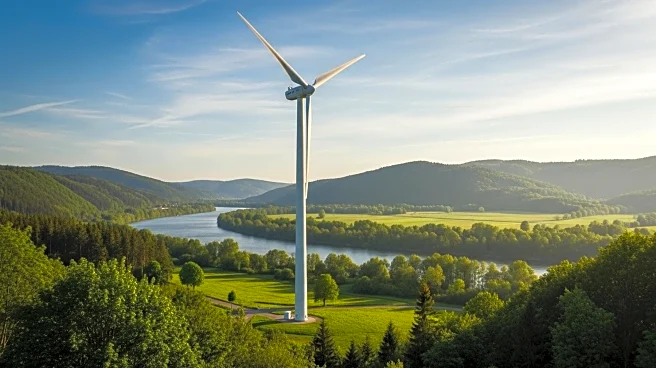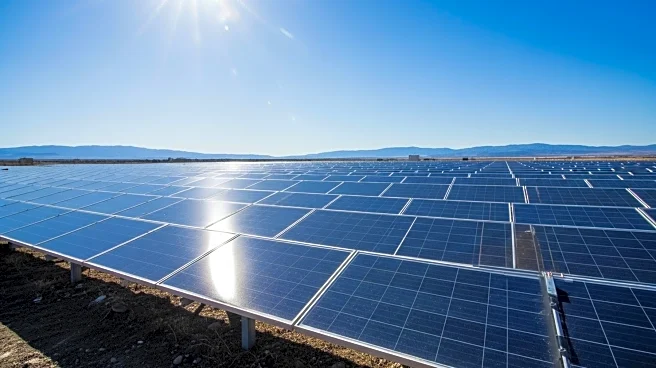What's Happening?
China has developed a new type of floating power plant, the S1500, which harnesses high-altitude winds to generate electricity. This innovative approach involves a large blimp equipped with turbine generators, floating at altitudes between 500 and 10,000 meters where winds are consistently strong. The S1500, which recently completed its maiden flight in Xinjiang, offers significant cost reductions compared to traditional wind turbines, cutting material costs by 40% and electricity costs by 30%. The technology allows for rapid relocation to areas with optimal wind conditions, providing a reliable and powerful energy source.
Why It's Important?
This development represents a significant advancement in renewable energy technology, potentially transforming energy markets by providing a consistent and powerful source of electricity. The ability to deploy floating power plants anywhere with airspace could lead to strategic energy independence, reducing reliance on land-based infrastructure and minimizing environmental impact. The technology could also be used for emergency power generation in disaster-stricken areas, offering a versatile solution for energy needs in remote locations.
What's Next?
China plans to scale up the deployment of floating power plants as part of a government action plan running through 2030, aiming to establish a new energy infrastructure. The success of the S1500 suggests that fleets of these airborne power plants could become a common feature in the energy landscape, potentially leading to widespread adoption and integration into existing energy systems. As the technology matures, it may influence global energy strategies, encouraging other countries to explore similar innovations.










